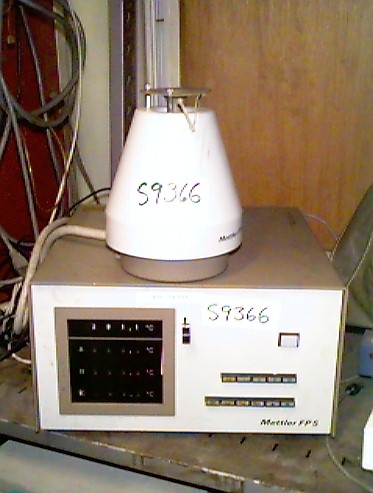
For further accuracy, you can use a packing wire to further compact the sample. You then need to get the powder all the way to the bottom of the capillary tube by tapping the closed-end multiple times on a hard surface so that the sample is compacted down at the closed end of the tube (you could also use a method where you drop the tube multiple times through a glass tube approx. Then with your capillary tube, use the open end of the tube to press down gently on the sample several times. Sample Preparationįirstly, you must ensure that the sample is fully dry and in powdered form.

A Melting Point Apparatus will more than likely have the temperature displayed in digital format for easy recording of data.

Observation is generally conducted through a viewing eyepiece. Generally, you will heat the capillary tube to near melting point and then decrease the speed of the temperature increase so that you can observe when the sample melts. At a basic level, the machine is designed so that a capillary tube with the sample can be inserted into the device and rapidly heated to a set temperature. There are many different types of Melting Point Apparatus machines and they range in functionality and accuracy. This device uses the same concept of heating a sample in a capillary tube but makes the process far simpler and quicker. It is important to heat the sample slowly using this method so that a thermal equilibrium can be established.Ī more modern way of using the capillary method is to use a device called a Melting Point Apparatus. If you don’t have a heating bath, you can use Mineral Oil in a Thiele Tube and heat the tube with a Bunsen Burner. The capillary tube is then placed into a heating bath and the experiment is conducted. The concept involves placing a small amount of the substance in a capillary tube and joining this to a thermometer.
#MELTING POINT MEASURE MANUAL#
The first is a manual apparatus set up with the aim of heating up a sample inside a capillary tube whilst visually looking for when the sample has melted. There are a few ways in which you can set up an experiment with the capillary method. This method involves placing the sample in a capillary tube and running an experiment that will heat the sample until it reaches melting point. The most common and most basic method of determination is the capillary method. There are a variety of methods that you can use to determine the melting point of a sample. A melting range is a difference between the temperature at which the sample begins to melt and the temperature at which the sample has actually melted. This is due to most samples appear to melt over a small temperature range. When measuring a melting point, you will generally find that it is recorded as a melting range rather than the exact melting point. It is used to identify a sample, establish its purity, and determine the thermal stability of the sample. If you have any special requirements, please let us know by contacting us or by sending us a request for a quote.The determination of a melting point of a sample is a standard laboratory procedure and is relatively straightforward. Tests can be carried out according to various methods and standards (ASTM E794, DIN 51004, DIN 51730, etc.).
#MELTING POINT MEASURE FULL#
These laboratories are able to determine the melting point of many elements and materials and most of them have an ISO 17025 accreditation (ILAC full member).

Laboratory analysis, determination of melting point:Īnalytice has an extensive network of laboratories specialising in material or thermal analysis. The melting point is part of the information on essential chemical and physical properties that regulations require to be indicated on products placed on the market in order to prevent thermal hazards associated with them. This second technique consists of measuring the heat flow associated with phase transitions or thermal reactions. Differential scanning calorimetry can also be applied. Among them, differential thermal analysis measures the difference in temperature of the sample relative to a reference. There are several techniques for measuring the melting temperature. The more impurities there are, the lower the melting temperature will be. The melting temperature is also an indicator of purity. This thermal value is very often used as a reference to characterize materials. The melting point is the temperature required for a material to change from a solid state to a liquid state under a given pressure.


 0 kommentar(er)
0 kommentar(er)
